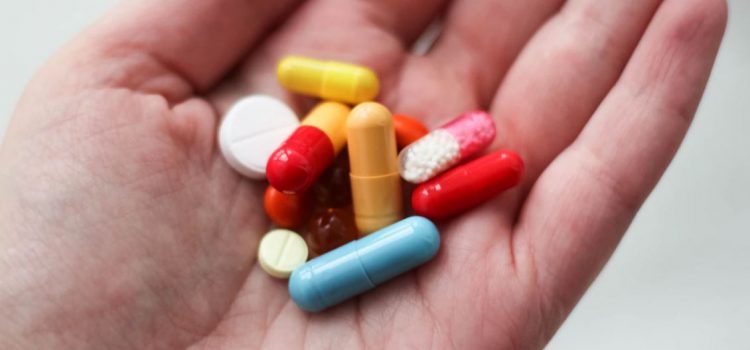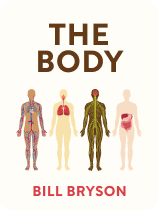

This article is an excerpt from the Shortform book guide to "The Body" by Bill Bryson. Shortform has the world's best summaries and analyses of books you should be reading.
Like this article? Sign up for a free trial here .
Why do doctors prescribe so many medications? What considerations should doctors take before prescribing meds?
Oftentimes, when people go to the doctor for an issue, the doctor’s first inclination is to prescribe medication. However, medication isn’t always the answer—sometimes it can do more harm than good.
Here’s why overtreatment in healthcare is a problem, according to Bill Bryson.
Too Much Medication
We’ve discussed several things you can do to keep your body functioning well, but now let’s turn our attention to what happens when you do get sick or injured. As he considers the body’s various ailments, Bryson discusses many historical and modern medical practices, covering the whole spectrum from ingenious to horrifying.
Two problems that he notes are still prevalent in the U.S. today are overtreatment and failure to take gender into consideration when designing or prescribing medications. We’ll now consider these problems and what you can do about them.
Beware of Overtreatment
Bryson asserts that overtreatment in healthcare (medical treatment beyond what would actually be beneficial) is a common problem in the developed world, especially in the United States. As such, whenever a doctor proposes treatment, take a moment to critically consider whether the treatment would actually help. Bryson discusses three particular situations that lend themselves to overtreatment:
Treatment at the End of Life
When an elderly person is diagnosed with early-stage cancer, doctors usually prescribe aggressive treatment to eradicate the cancer before it spreads. However, if the person is likely to die of other causes before the cancer becomes noticeable, then there’s no point treating the cancer. Bryson points out that early-stage cancers often take years to develop. And all current cancer treatments are hard on the body. So, depending on the person’s age and overall health, the side effects of chemotherapy or other aggressive cancer treatments might actually shorten her life expectancy more than leaving the cancer alone would.
(Shortform note: Michael Greger’s discussion of how medical treatments can result in premature death provides additional support for Bryson’s point. In How Not to Die, Greger notes that each year, over 100,000 people die from side effects of medications, and another 12,000 die from complications of unnecessary surgeries. These numbers help to illustrate the danger involved in receiving medical treatment. As Bryson points out, if the risk of dying from the treatment is greater than the risk of dying from the condition being treated, then the treatment probably isn’t worth it.)
Treatment Due to False Positives
Many tests for cancers, diseases, and other conditions are prone to “false positives,” that is, the test indicates a problem that doesn’t actually exist. For example, Bryson says that if a mammogram comes back positive, that indicates only a 10% chance that the woman who was tested actually has cancer. Overtreatment can happen when a person is treated for a condition she doesn’t have due to a false-positive test.
(Shortform note: Bryson cites Strange Glow by Timothy Jorgensen as his source of information that 90% of positive mammogram tests are false positives. However, different sources provide different numbers. One study reported that for every 10,000 mammograms, there are an average of two cases of cancer and 170 false positives, implying a false-positive rate of almost 99%. But another study asserts that the rate of false positives for mammograms is not more than 14.4%, and varies from one region to another, with many countries averaging a false positive rate around 5%.)
Treating Symptoms Instead of the Source
Treatments that address symptoms instead of underlying causes can be a form of overtreatment. For example, Bryson says that people with high blood pressure often take medication to reduce it because high blood pressure increases the risk of heart disease. He says that taking blood pressure medications reduces your blood pressure but actually doesn’t reduce your risk of heart disease, because high blood pressure is just a symptom that accompanies heart disease, not the actual cause.
| Subconscious Assumptions Drive Doctors to Treat Symptoms Bryson draws his blood pressure medication example from an article that investigated several medical procedures that are commonly prescribed, despite data showing they don’t improve patient outcomes. The original article provides additional insight on why doctors continue to employ treatments that they know are unlikely to help. The issue seems to be that even trained physicians subconsciously oversimplify the human body: In this case, we know that people with high blood pressure are at greater risk of heart disease, so we assume a simple cause-and-effect relationship between high blood pressure and heart failure. After subconsciously making this assumption, it seems obvious that reducing a person’s blood pressure would reduce his risk of heart disease. Even when we see data to the contrary, we have trouble accepting it, until we recognize the error in our assumption: High blood pressure corresponds to an increased risk of heart failure, but it doesn’t directly cause heart failure. And it’s particularly difficult to consciously realize this error if we made the assumption subconsciously in the first place. |
Consider Gender When Planning Treatment
From Bryson’s discussion, we infer that you should ask your doctor about gender-specific side effects whenever your doctor prescribes a new medication, especially if you’re a woman.
Bryson warns that many treatments affect men and women differently. In some cases, a drug will cause severe side effects (such as brain hemorrhaging) in one gender but not the other. This is because male and female bodies metabolize chemicals differently, and it is particularly problematic because drugs are not always tested on both genders.
According to Bryson, as of 2007, 80% of all available drugs had been tested only on men during their respective clinical trials. Pharmaceutical companies used male-only test populations because they were afraid that women’s menstrual cycles would introduce an additional variable, making the test results less clear.
(Shortform note: This seems to be improving. Clinical trials for new drugs now include equal representation of both sexes, and in 2019, 72% of all trial participants were women because of increased development of drugs specifically for women. However, it’s difficult to say exactly how much it still needs to improve, because gender-specific data still isn’t available for all medications on the market. A study that analyzed 137 common medications in 2018 found that women were adequately represented in clinical trials for all the drugs that they had adequate data to assess, but they were only able to assess 28% of the medications because gender data wasn’t available for the others.)
Bryson also warns that women are more often misdiagnosed because the symptoms of many medical conditions manifest differently in men and women. Heart attacks, in particular, are often mistaken for other conditions in women because a woman having a heart attack often experiences abdominal pain and nausea, whereas doctors more readily associate chest pain with heart conditions (which is the classic symptom of heart attacks for men).
(Shortform note: Experts at the Mayo Clinic describe additional symptoms of heart disease in women. Besides abdominal pain and nausea, symptoms may include pain in the neck, jaw, arms, or shoulders, as well as fatigue, dizziness, or heartburn.)
| Where to Find Information How do you determine if a treatment or medication is safe for you, given your gender? The obvious answer is to discuss it with your doctor—or perhaps with another doctor, if the physician who prescribed it isn’t well versed in how it might affect men and women differently. One resource you can also use is the National Library of Medicine. You can search their database for a drug by name and get a comprehensive overview of its uses, directions for use, known side effects, and any special precautions you should take when using it. The information isn’t perfect, because, as Bryson points out, not all medications have been studied with respect to how they affect different genders. But it’s a starting point that can bring any known issues to your attention. Another resource is the FDA’s database of post-market drug safety information. If you look up a given drug on this website, it will provide information on any issues with a given drug that surfaced after it was released onto the market, or references to aftermarket studies on the drug. |

———End of Preview———
Like what you just read? Read the rest of the world's best book summary and analysis of Bill Bryson's "The Body" at Shortform .
Here's what you'll find in our full The Body summary :
- A whirlwind tour of the human body’s various systems
- Why your sense of smell is probably as good as your dog’s
- How hot peppers increase your life expectancy






